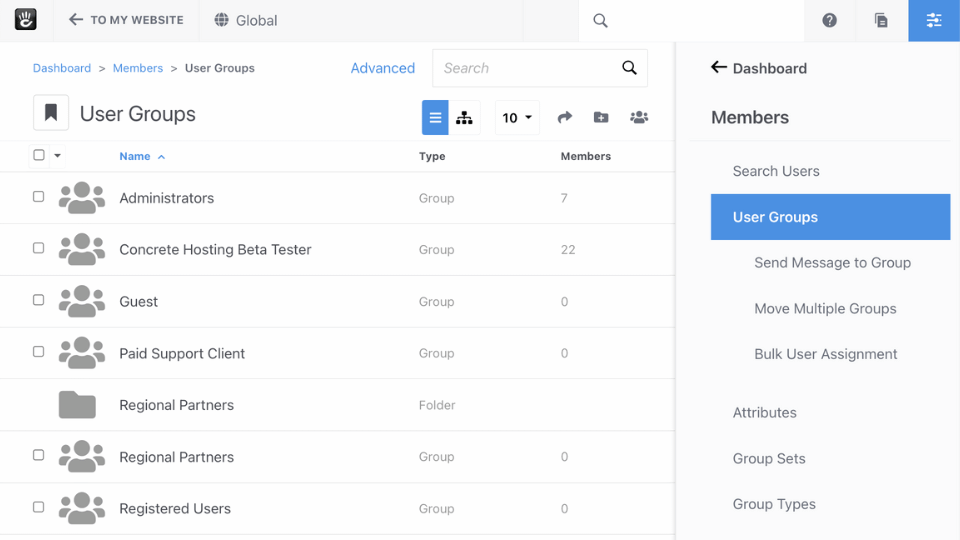
Trusted by the best
Granular access Control Over Users
Imagine having the power to define exactly who can do what on your website. With Concrete CMS’s Advanced Permissions, you can. Whether you need to restrict access to sensitive areas or empower your content team, our system lets you set specific permissions for different user roles.
Timed Permissions
Ever wish you could control when certain users have access to edit your website? With Concrete CMS’s Time Settings, you can do just that. This feature allows you to set permissions that are valid only during a specified time frame, giving you even more granular control over your website’s security and operations.
Users and Permissions
Managing users and permissions is crucial for maintaining a secure and efficient website. Concrete CMS’s robust permissions system allows you to control who has access to what, down to the finest detail. Here’s how:
- Groups: Organize your users into groups to simplify permission management. Whether you’re handling a large team or multiple departments, groups make it easy to assign and manage permissions across your site.
- Role-Based Permissions: Roles in Concrete CMS are your ticket to streamlined access control. Assign roles to users to define their access and capabilities effortlessly. Want to give your marketing team access to blog posts but restrict them from altering core site settings? Done. With role-based permissions, managing user capabilities is straightforward and intuitive.
Content Approvals and advanced workflows
Tired of chaotic content approval processes? Concrete CMS introduces advanced workflows that bring order and efficiency to your content approval pipeline. Set up workflows that ensure content is reviewed and approved before it goes live, giving you peace of mind and maintaining high standards for published content.
Users and Permissions
- Attributes: Attributes in Concrete CMS provide additional customization for user profiles. Tailor user capabilities by defining custom attributes that match your organization’s specific needs.
- Exclusions: Sometimes, you need to make exceptions. With exclusions, you can create precise rules to exclude certain users or groups from specific permissions, ensuring your access control policies are perfectly aligned with your operational requirements.
- My Profile: Empower users with the ability to manage their own profiles. Each user can view and update their profile attributes, enhancing the user experience and reducing administrative overhead.
- Custom Single Pages: Need a unique page with specific access controls? Concrete CMS allows you to create custom single pages with tailored permissions, ensuring that sensitive information is only accessible to the right people.

You need a CMS that saves you time.
Schedule a demo and tell us a bit about your project and we'll help you decide if Concrete CMS should be on your shortlist.
Frequently Asked Questions
Advanced permissions in Concrete CMS allow you to control who has access to various parts of your website, ensuring that only authorized users can make changes. This granular control helps prevent unauthorized modifications and enhances the overall security of your site.
Absolutely! With role-based permissions, you can create specific roles with tailored access levels. This means you can designate roles for editors, content creators, and administrators, each with distinct permissions that align with their responsibilities.
Yes, Concrete CMS offers Time Settings that enable you to set time-specific permissions. For example, you can restrict editing access to business hours or grant temporary access during specific events or projects, ensuring users can only access features when needed.
Yes, Concrete CMS’s permissions system includes exclusions, which let you create exceptions to general rules. This means you can fine-tune access by excluding specific users or groups from certain permissions, providing a higher level of precision and flexibility in your security settings.
User groups are collections of users with similar access needs. By organizing users into groups, you can assign permissions to the group as a whole rather than individual users, streamlining the process of managing access controls and ensuring consistency across your team.
Advanced workflows in Concrete CMS allow you to create multi-stage approval processes for your content. You can define each stage, assign reviewers, and automate notifications to ensure content is reviewed and approved systematically before publication.









